
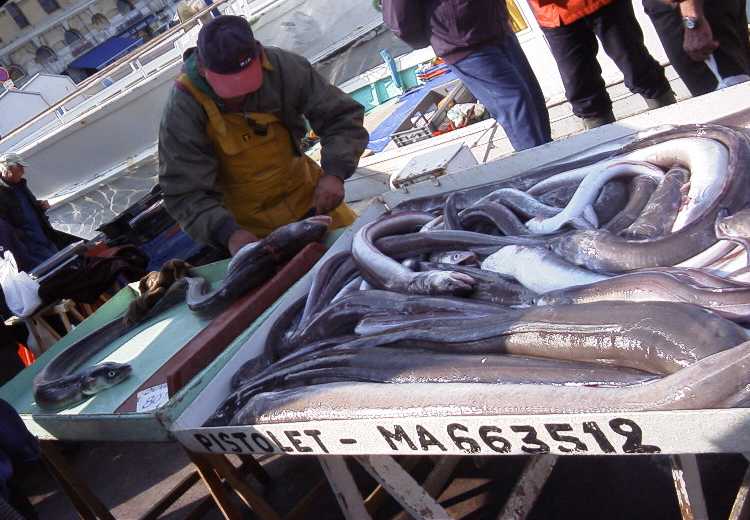
Friday night saw us take the high speed train to Marseille's 1848 Gare St. Charles with its 100+ steps leading down into the old city. Twenty-six centuries in the making, Marseille is France's second largest city, but at about a 1 million inhabitants, it is a pretty distant second to our Paris. It's located where the Rhone feeds into the Mediterranean.
First thing Saturday we trod down those steps to the old city which clusters around Vieux Port (the old port):
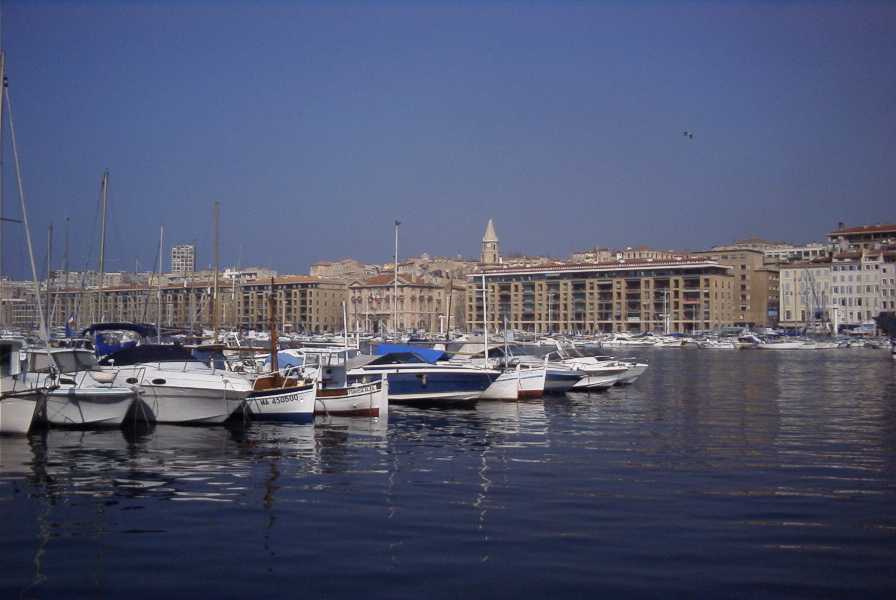
Unfortunately, most of the area surrounding theold port was trashed during WWII, first by the Italians and Germans (who dynamited most of the buildings wrapped around the waterway on their way out of town. They had similar intentions for Paris but were thwarted by their own commanding general). On their way in, the Allies dropped a few bombs as well.
After the war, the people of Marseille rebuilt this area with vigor. As you can see, the port, bristling with the masts of pleasure boats, is surrounded by new buildings:
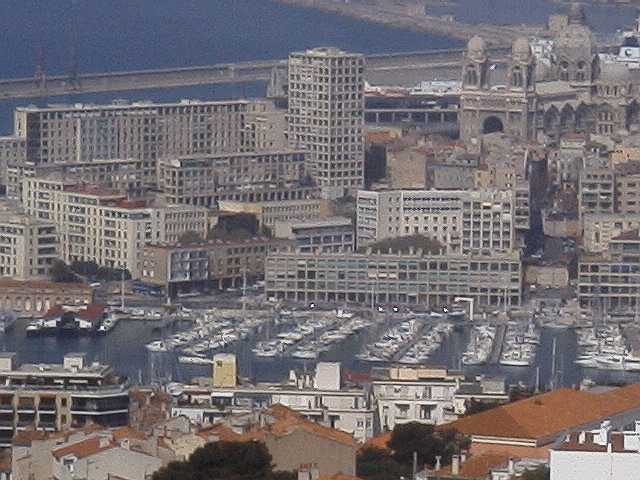
OK, you can't see the masts. It's not your eyes, its the cheap telephoto on my digicam. Use a little imagination!
It's a tradition to have the six-fish stew called Bouillabaisse for lunch. We found a cafe bordering the old port and partook in this dish, probably having one of the eels being shown sold nearby. We've learned to enjoy French food and not ask what we're eating. (For you Garden Cityites, supposedly Bouillabaisse was invented at a lava-carved Provence village called St. Raphael. Somehow I don't recall having it for lunch while growing up; but I'm sure Mark would.)
One of the few buildings that survived WWII was the Hotel de Ville (the city hall). Town halls have been on this site since the 1200s but this Provencal Baroque building dates from around the mid 1600s.
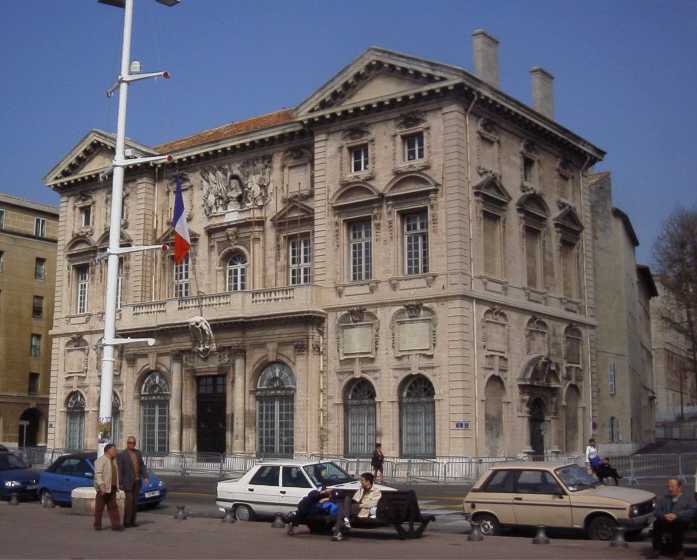
Beautiful yachts moor in front of the Hotel de Ville:
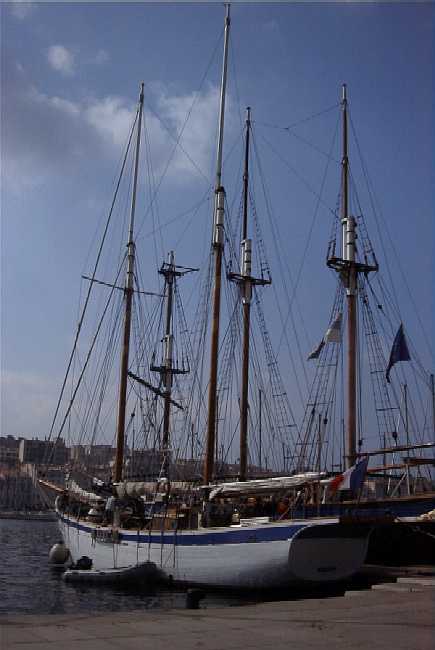
Looking from city hall up the steep slope one sees the Hotel-Dieu (the hospital) with its distinctive galleries:
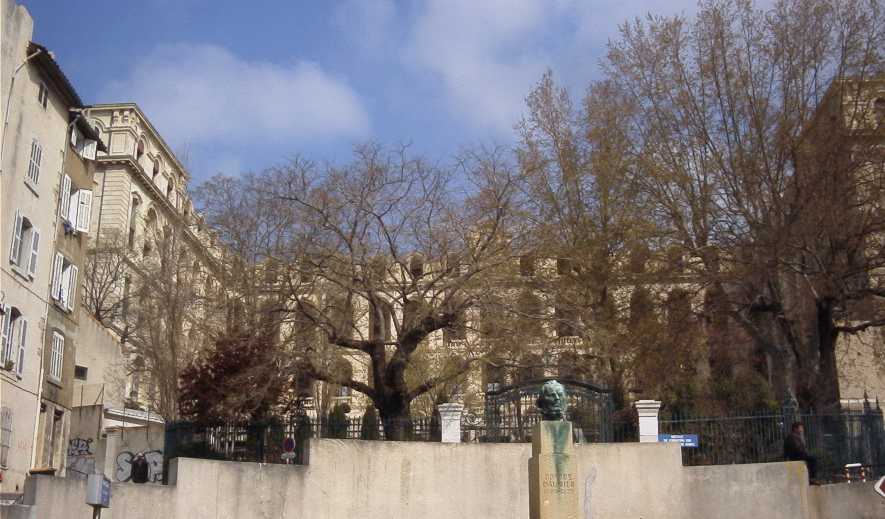
The hospital is surrounded by narrow medieval-sized streets:
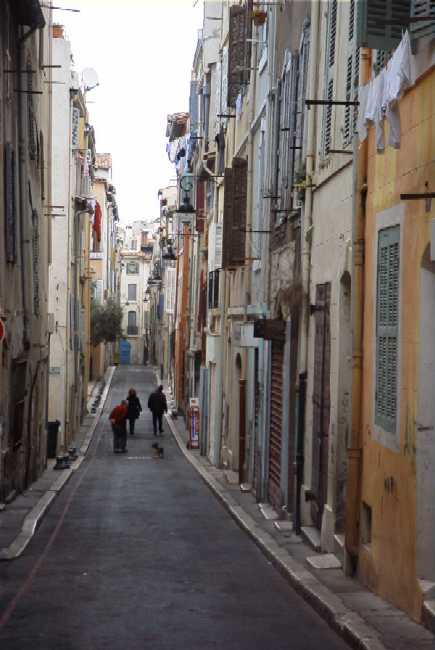
These lead to Pavilion Daviel, a mid 18th century building used for courts although it looks like a church:
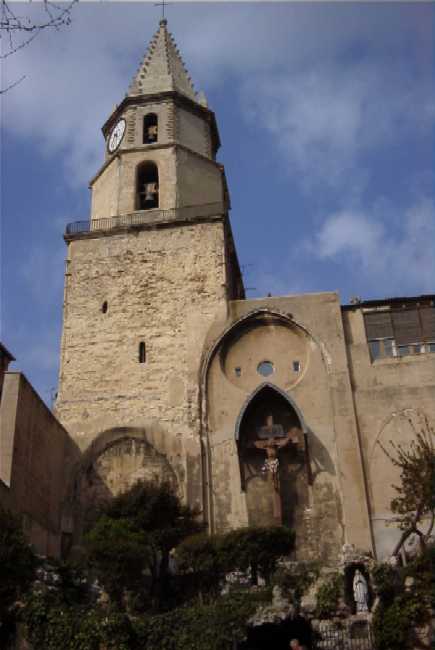
The city museum was closed but we were able to get the picture of the wall made of "diamond" stones which give it its nickname of Maison Diamantee.
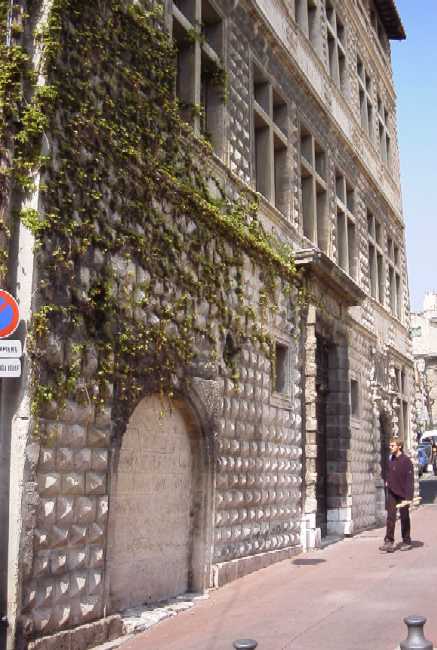
Beyond lies the Centre de la Vielle Charite, a former poor house built from 1671 to 1749 which wraps around this Italian baroque chapel.
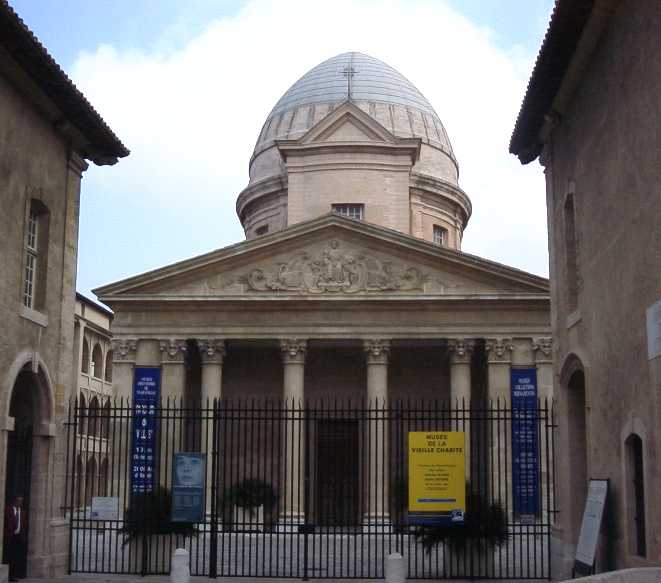
The chapel is surrounded by a 3 storied gallery.
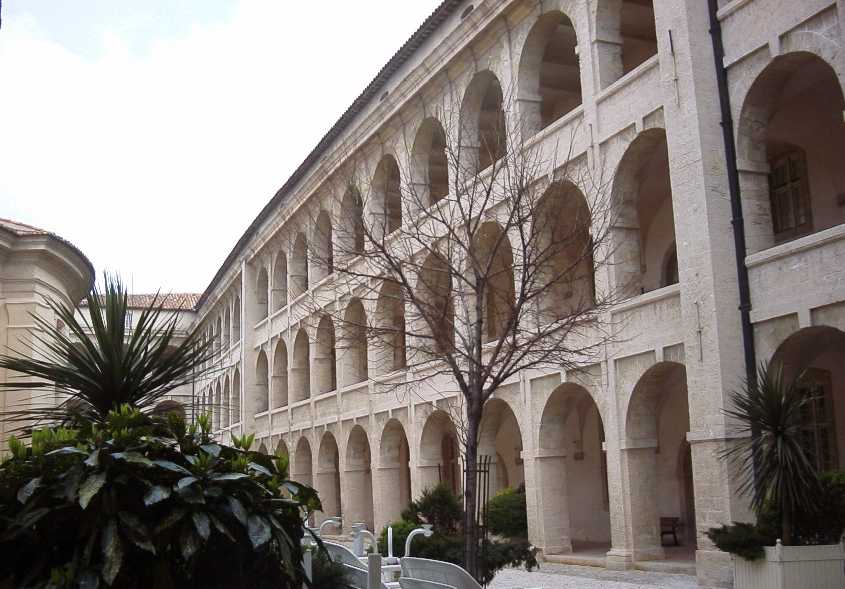
These galleries contain several museums.
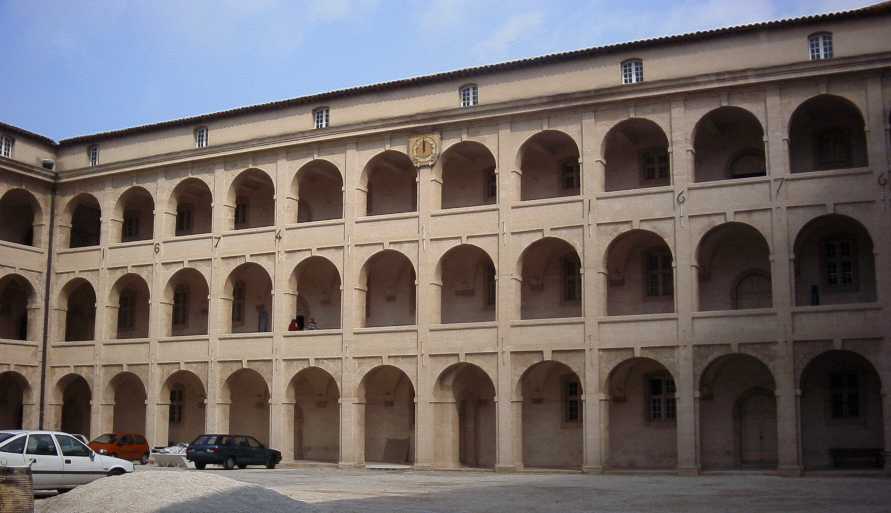
The place didn't always look this good. A sign shows its condition after WWII. The restoration lasted from 1970 through 1986:
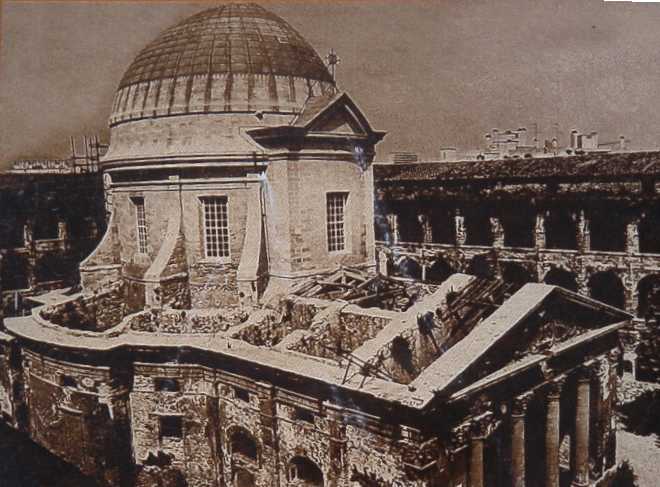
The Cathedrale de la Major was a mid 19th century Roman-Byzantine edifice started by Napoleon III to win favor with the church.

Got good bandwidth and the interest? We have 14 more pictures which you can see by clicking here:
After leaving the cathedral, we walked around one of the old forts that guarded the entrance to the harbor:
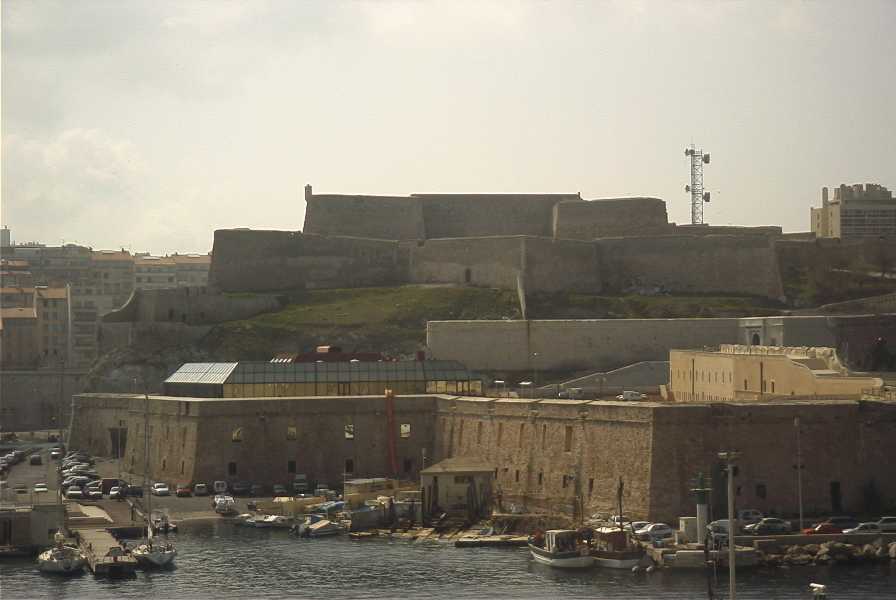
After lunch we took a bus up the steep hills south of the harbor to a beautiful church that had views such as that of the new harbor below. Please join us by clicking here.
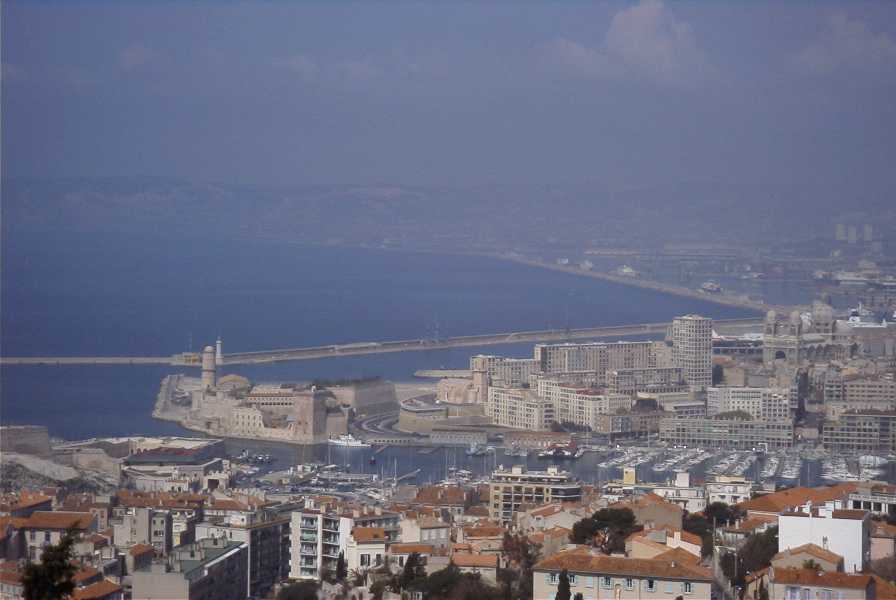
Where do you want to go today? Here's a few choices:
